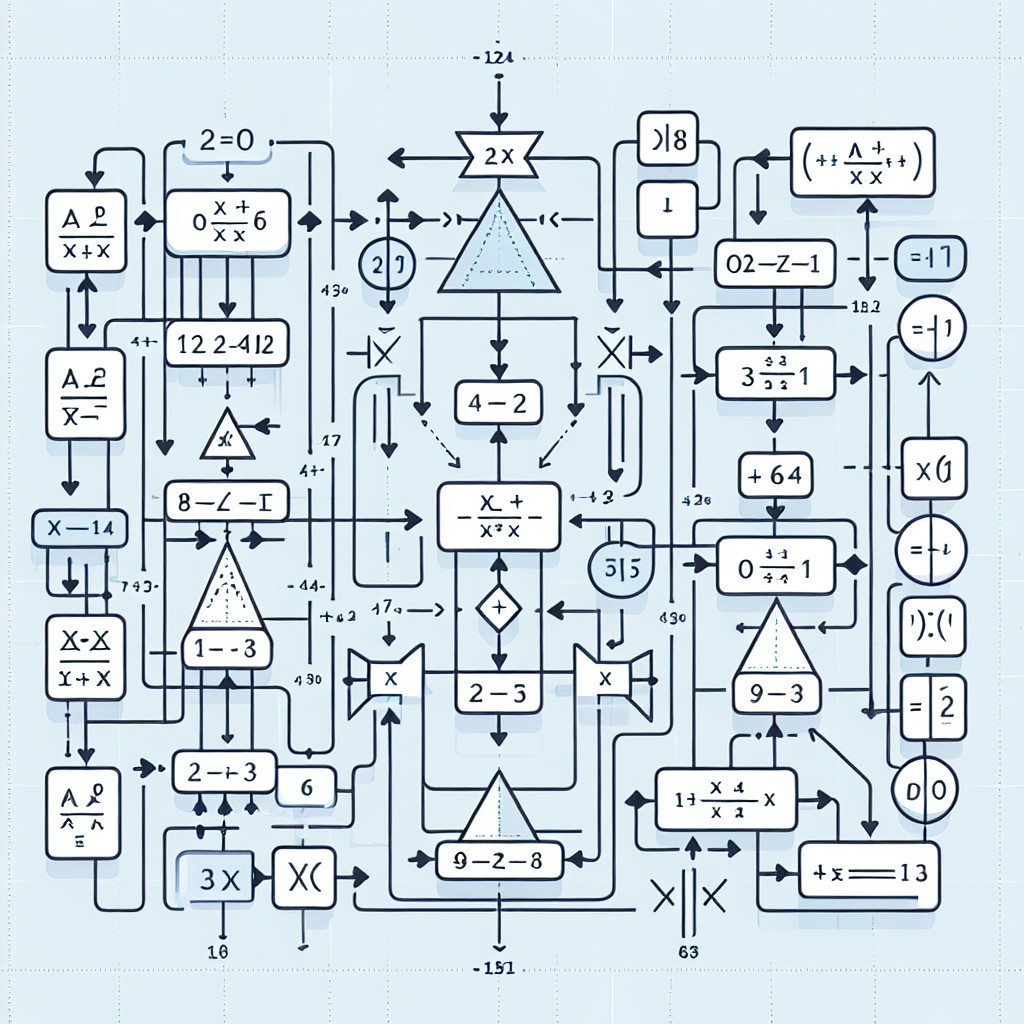Trigonometry is a branch of mathematics that deals with the relationships between the angles and sides of triangles. It is derived from the Greek words “trigonon” meaning triangle and “metron” meaning measure. Trigonometry is an important field of study because it has numerous applications in various fields such as physics, engineering, architecture, computer graphics, and more.
Trigonometry is used to solve problems involving distances and angles. For example, in physics, trigonometry is used to calculate the trajectory of a projectile, the motion of waves, and the behavior of light. In engineering, trigonometry is used to design structures such as bridges and buildings, as well as to calculate forces and stresses on materials. In architecture, trigonometry is used to design and construct buildings with precise angles and dimensions. In computer graphics, trigonometry is used to create realistic 3D models and animations.
Key Takeaways
- Trigonometry is the study of triangles and their relationships to angles and sides.
- Trigonometry is important in fields such as science, engineering, and architecture.
- Angles can be measured in degrees or radians, with 360 degrees or 2π radians in a full circle.
- The sine, cosine, and tangent functions relate angles to the ratios of sides in a right triangle.
- Trigonometric identities can be used to simplify equations and solve problems, while advanced topics include inverse trig functions and hyperbolic trig.
The Basics of Trigonometry: Understanding Angles, Degrees, and Radians
Angles are a fundamental concept in trigonometry. An angle is formed when two rays share a common endpoint called the vertex. Angles are typically measured in degrees or radians.
Degrees are the most common unit of measurement for angles. A circle is divided into 360 degrees, with each degree representing 1/360th of a full rotation. To convert between degrees and radians, you can use the following formulas:
Radians = (Degrees * π) / 180
Degrees = (Radians * 180) / π
Radians are another unit of measurement for angles that are commonly used in trigonometry. A radian is defined as the angle subtended at the center of a circle by an arc that is equal in length to the radius of the circle. There are 2π radians in a full circle.
The unit circle is a circle with a radius of 1 unit. It is used in trigonometry to define the values of trigonometric functions for any angle. The unit circle is divided into four quadrants, each representing a different range of angles. The x-coordinate of a point on the unit circle represents the cosine of the angle, while the y-coordinate represents the sine of the angle.
Trigonometric Functions: Sine, Cosine, and Tangent Explained
Trigonometric functions are mathematical functions that relate the angles of a triangle to the ratios of its sides. The three primary trigonometric functions are sine, cosine, and tangent.
Sine (sin) is defined as the ratio of the length of the side opposite an angle to the length of the hypotenuse. It is often used to calculate the vertical component of a vector or the height of a triangle.
Cosine (cos) is defined as the ratio of the length of the side adjacent to an angle to the length of the hypotenuse. It is often used to calculate the horizontal component of a vector or the base of a triangle.
Tangent (tan) is defined as the ratio of the length of the side opposite an angle to the length of the side adjacent to that angle. It is often used to calculate slopes or angles in trigonometry.
To calculate trigonometric functions, you can use a scientific calculator or reference tables. However, it is important to understand how these functions are derived and their relationship to each other.
The relationship between sine and cosine can be understood using Pythagoras’ theorem. According to Pythagoras’ theorem, in a right-angled triangle, the square of the hypotenuse is equal to the sum of the squares of the other two sides. Using this theorem, we can derive several trigonometric identities that relate sine and cosine.
Graphing Trigonometric Functions: How to Plot Sin, Cos, and Tan Graphs
| Trigonometric Function | Graph Characteristics | Period | Amplitude | Phase Shift | Vertical Shift |
|---|---|---|---|---|---|
| Sine (sin) | Periodic, oscillating, symmetric about the origin | 2π | 1 | c | d |
| Cosine (cos) | Periodic, oscillating, symmetric about the y-axis | 2π | 1 | c | d |
| Tangent (tan) | Periodic, asymptotic, vertical asymptotes at odd multiples of π/2 | π | ∞ | c | d |
Graphing trigonometric functions is an important skill in trigonometry. The graphs of sine, cosine, and tangent functions have distinct patterns and characteristics.
The period of a trigonometric function is the length of one complete cycle of the graph. For sine and cosine functions, the period is 2π radians or 360 degrees. For tangent functions, the period is π radians or 180 degrees.
The amplitude of a trigonometric function is the maximum value of the function. For sine and cosine functions, the amplitude is always positive and equal to 1. For tangent functions, there is no amplitude.
To graph a sine function, start by plotting key points on the graph using the values of sine for different angles. Connect these points to create a smooth curve that repeats every 2π radians or 360 degrees. The graph of a cosine function is similar to that of a sine function, but it is shifted horizontally by π/2 radians or 90 degrees.
The graph of a tangent function has vertical asymptotes at odd multiples of π/2 radians or 90 degrees. It also has repeating patterns every π radians or 180 degrees.
Trigonometric Identities: The Key to Simplifying Trig Equations
Trigonometric identities are equations that are true for all values of the variables involved. They are derived from the definitions of trigonometric functions and can be used to simplify trigonometric equations.
There are several common trigonometric identities that are used frequently in trigonometry. Some of these identities include:
– Pythagorean identities: These identities relate the squares of sine and cosine to each other. The most well-known Pythagorean identity is sin^2θ + cos^2θ = 1.
– Reciprocal identities: These identities relate the reciprocals of sine, cosine, and tangent to each other. For example, sinθ = 1/cscθ, cosθ = 1/secθ, and tanθ = 1/cotθ.
– Quotient identities: These identities relate the quotient of sine and cosine to tangent. For example, tanθ = sinθ/cosθ.
– Co-function identities: These identities relate the values of trigonometric functions for complementary angles. For example, sin(π/2 – θ) = cosθ.
Trigonometric identities can be used to simplify trigonometric equations by substituting equivalent expressions or manipulating the equations to a more manageable form.
Solving Trigonometric Equations: Tips and Tricks for Finding Solutions

Solving trigonometric equations involves finding the values of the variables that satisfy the equation. There are several methods for solving trigonometric equations, depending on the complexity of the equation.
One method for solving trigonometric equations is to use algebraic techniques such as factoring, expanding, or simplifying the equation. This method is often used for simple equations involving basic trigonometric functions.
Another method for solving trigonometric equations is to use inverse trigonometric functions. Inverse trigonometric functions are used to find the angle whose trigonometric function value is known. For example, if sinθ = 0.5, then θ = sin^(-1)(0.5).
When solving trigonometric equations, it is important to check the solutions by substituting them back into the original equation. This is because trigonometric functions are periodic and have multiple solutions within a given interval.
Trigonometry in Real Life: Applications of Trig in Science, Engineering, and More
Trigonometry has numerous real-life applications in various fields. Here are some examples of how trigonometry is used in different areas:
– Physics: Trigonometry is used to calculate the trajectory of a projectile, the motion of waves, and the behavior of light. It is also used in the study of mechanics, electromagnetism, and quantum physics.
– Engineering: Trigonometry is used to design structures such as bridges and buildings, as well as to calculate forces and stresses on materials. It is also used in electrical engineering, mechanical engineering, and civil engineering.
– Architecture: Trigonometry is used to design and construct buildings with precise angles and dimensions. It is also used in the study of architectural acoustics and lighting design.
– Computer Graphics: Trigonometry is used to create realistic 3D models and animations. It is also used in image processing, computer vision, and virtual reality.
– Navigation: Trigonometry is used in navigation systems such as GPS to calculate distances, angles, and positions. It is also used in aviation, marine navigation, and surveying.
Trigonometry plays a crucial role in problem-solving by providing mathematical tools to analyze and solve real-world problems.
Trigonometry and Geometry: Using Trig to Solve Triangles and Other Geometric Shapes
Trigonometry is closely related to geometry and can be used to solve problems involving triangles and other geometric shapes. Trigonometric ratios are used to relate the angles of a triangle to the lengths of its sides.
The three primary trigonometric ratios are sine, cosine, and tangent. These ratios can be used to find the lengths of unknown sides or the measures of unknown angles in a triangle.
To solve a triangle using trigonometry, you need to know at least three pieces of information, including angles or side lengths. Depending on the given information, you can use different trigonometric ratios to find the unknown values.
Trigonometry is also used to solve problems involving other geometric shapes such as circles, polygons, and spheres. By using trigonometric functions and identities, you can calculate the areas, perimeters, and volumes of these shapes.
Advanced Trigonometry: Exploring Inverse Trig Functions, Hyperbolic Trig, and More
Advanced trigonometry involves exploring topics beyond the basic trigonometric functions. Some of these topics include inverse trigonometric functions, hyperbolic trigonometry, and complex numbers.
Inverse trigonometric functions are used to find the angle whose trigonometric function value is known. The most common inverse trigonometric functions are arcsin, arccos, and arctan. These functions are denoted as sin^(-1), cos^(-1), and tan^(-1), respectively.
Hyperbolic trigonometry is a branch of trigonometry that deals with hyperbolic functions such as sinh, cosh, and tanh. These functions are analogs of the basic trigonometric functions but are defined using exponential functions.
Complex numbers are numbers that consist of a real part and an imaginary part. Trigonometry can be extended to complex numbers by using Euler’s formula, which relates complex exponentials to trigonometric functions.
Advanced trigonometry is often studied in higher-level mathematics courses or in specialized fields such as physics, engineering, or computer science.
Tips for Mastering Trigonometry: Study Strategies, Practice Problems, and Resources for Success
Trigonometry can be a challenging subject to master, but with the right study strategies and practice, you can succeed. Here are some tips for mastering trigonometry:
– Understand the concepts: Take the time to understand the definitions and properties of trigonometric functions. Make sure you understand how they are derived and their relationship to each other.
– Practice regularly: Trigonometry requires practice to become proficient. Solve a variety of problems to reinforce your understanding of the concepts and techniques.
– Use visual aids: Trigonometry often involves visualizing angles and triangles. Use diagrams, graphs, and other visual aids to help you understand and solve problems.
– Seek help when needed: If you are struggling with a particular concept or problem, don’t hesitate to seek help from your teacher, classmates, or online resources. There are many websites, videos, and forums that provide explanations and examples of trigonometry concepts.
– Review regularly: Trigonometry builds upon previous concepts, so it is important to review regularly to reinforce your knowledge. Set aside time each week to review previous topics and practice problems.
– Use resources: There are many resources available to help you master trigonometry. Textbooks, online tutorials, practice problems, and study guides can all be valuable tools for learning and practicing trigonometry.
By following these tips and dedicating time and effort to studying trigonometry, you can become proficient in this important branch of mathematics.

